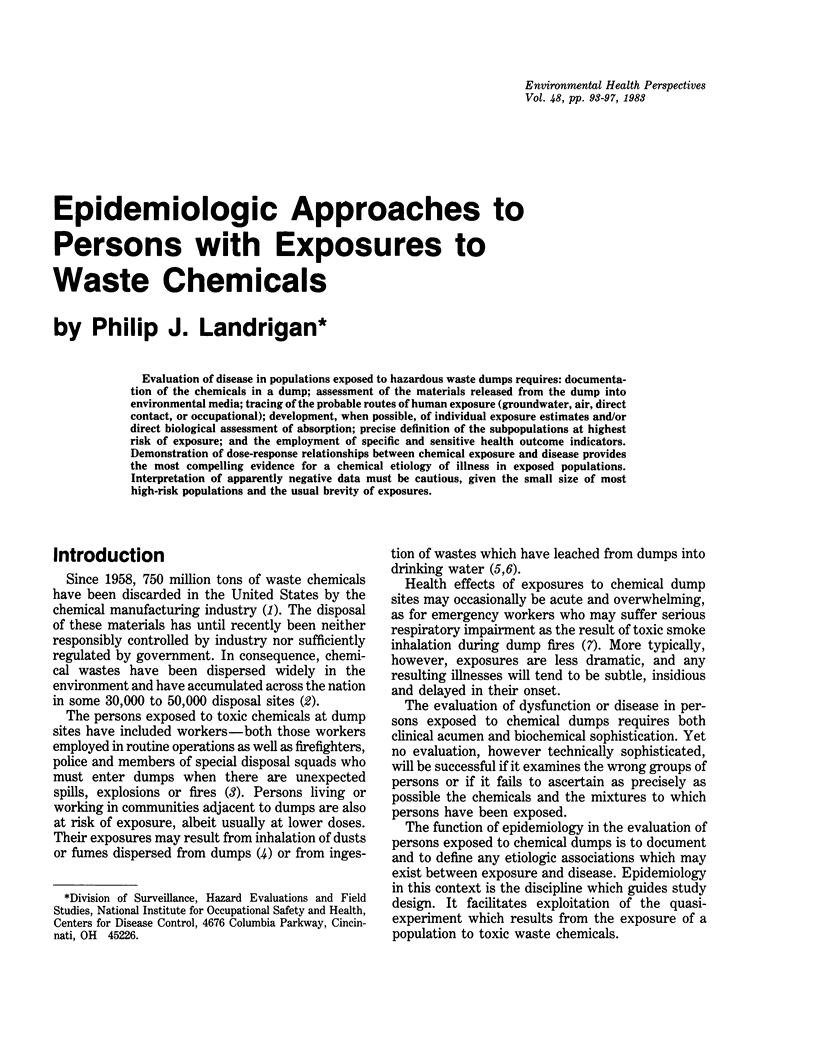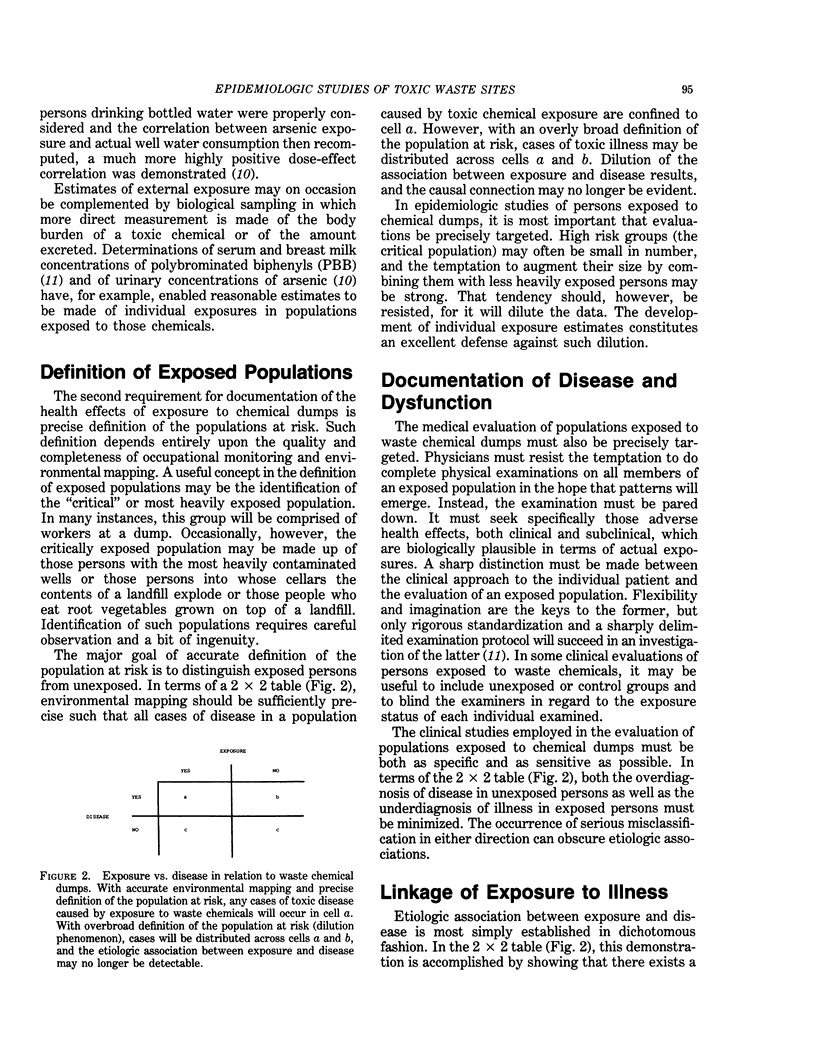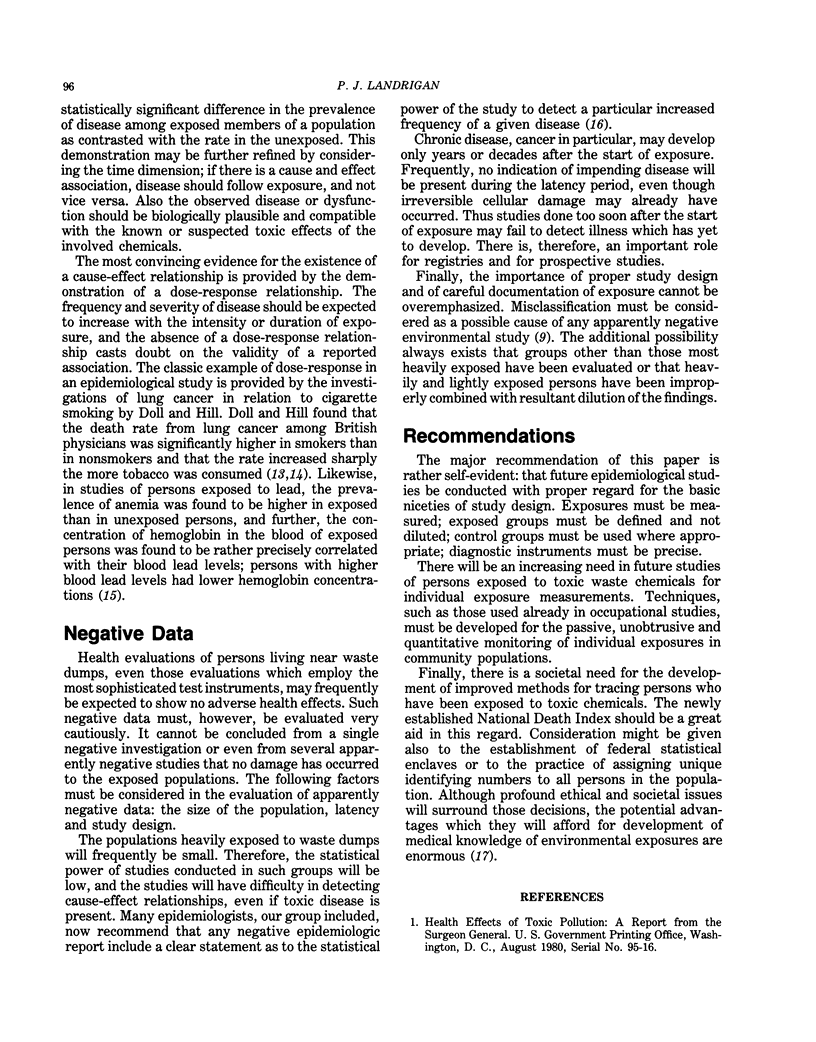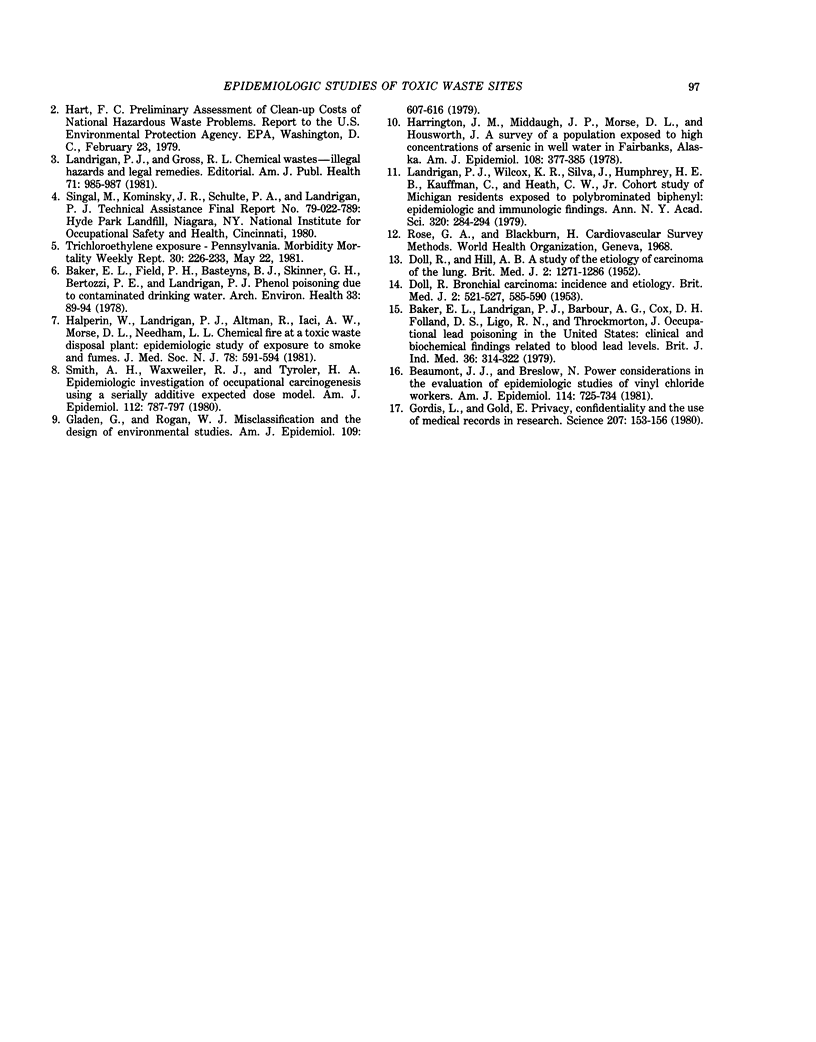Abstract
Evaluation of disease in populations exposed to hazardous waste dumps requires: documentation of the chemicals in a dump; assessment of the materials released from the dump into environmental media; tracing of the probable routes of human exposure (groundwater, air, direct contact, or occupational); development, when possible, of individual exposure estimates and/or direct biological assessment of absorption; precise definition of the subpopulations at highest risk of exposure; and the employment of specific and sensitive health outcome indicators. Demonstration of dose-response relationships between chemical exposure and disease provides the most compelling evidence for a chemical etiology of illness in exposed populations. Interpretation of apparently negative data must be cautious, given the small size of most high-risk populations and the usual brevity of exposures.
Full text
PDF




Selected References
These references are in PubMed. This may not be the complete list of references from this article.
- Baker E. L., Jr, Landrigan P. J., Barbour A. G., Cox D. H., Folland D. S., Ligo R. N., Throckmorton J. Occupational lead poisoning in the United States: clinical and biochemical findings related to blood lead levels. Br J Ind Med. 1979 Nov;36(4):314–322. doi: 10.1136/oem.36.4.314. [DOI] [PMC free article] [PubMed] [Google Scholar]
- Baker E. L., Landrigan P. J., Bertozzi P. E., Field P. H., Basteyns B. J., Skinner H. G. Phenol poisoning due to contaminated drinking water. Arch Environ Health. 1978 Mar-Apr;33(2):89–94. doi: 10.1080/00039896.1978.10667314. [DOI] [PubMed] [Google Scholar]
- Beaumont J. J., Breslow N. E. Power considerations in epidemiologic studies of vinyl chloride workers. Am J Epidemiol. 1981 Nov;114(5):725–734. doi: 10.1093/oxfordjournals.aje.a113244. [DOI] [PubMed] [Google Scholar]
- DOLL R. Bronchial carcinoma: incidence and aetiology. Br Med J. 1953 Sep 12;2(4836):585–590. doi: 10.1136/bmj.2.4836.585. [DOI] [PMC free article] [PubMed] [Google Scholar]
- DOLL R., HILL A. B. A study of the aetiology of carcinoma of the lung. Br Med J. 1952 Dec 13;2(4797):1271–1286. doi: 10.1136/bmj.2.4797.1271. [DOI] [PMC free article] [PubMed] [Google Scholar]
- Gladen B., Rogan W. J. Misclassification and the design of environmental studies. Am J Epidemiol. 1979 May;109(5):607–616. doi: 10.1093/oxfordjournals.aje.a112719. [DOI] [PubMed] [Google Scholar]
- Gordis L., Gold E. Privacy, confidentiality, and the use of medical records in research. Science. 1980 Jan 11;207(4427):153–156. doi: 10.1126/science.7350648. [DOI] [PubMed] [Google Scholar]
- Halperin W., Landrigan P. J., Altman R., Iaci A. W., Morse D. L., Needham L. L. Chemical fire at toxic waste disposal plant: epidemiologic study of exposure to smoke and fumes. J Med Soc N J. 1981 Aug;78(9):591–594. [PubMed] [Google Scholar]
- Harrington J. M., Middaugh J. P., Morse D. L., Housworth J. A survey of a population exposed to high concentrations of arsenic in well water in Fairbanks, Alaska. Am J Epidemiol. 1978 Nov;108(5):377–385. doi: 10.1093/oxfordjournals.aje.a112635. [DOI] [PubMed] [Google Scholar]
- Landrigan P. J., Gross R. L. Chemical wastes--illegal hazards and legal remedies. Am J Public Health. 1981 Sep;71(9):985–987. doi: 10.2105/ajph.71.9.985. [DOI] [PMC free article] [PubMed] [Google Scholar]
- Landrigan P. J., Wilcox K. R., Jr, Silva J., Jr, Humphrey H. E., Kauffman C., Heath C. W., Jr Cohort study of Michigan residents exposed to polybrominated biphenyls: epidemiologic and immunologic findings. Ann N Y Acad Sci. 1979 May 31;320:284–294. doi: 10.1111/j.1749-6632.1979.tb56611.x. [DOI] [PubMed] [Google Scholar]
- Smith A. H., Waxweiler R. J., Tyroler H. A. Epidemiologic investigation of occupational carcinogenesis using a serially additive expected dose model. Am J Epidemiol. 1980 Dec;112(6):787–797. doi: 10.1093/oxfordjournals.aje.a113051. [DOI] [PubMed] [Google Scholar]


